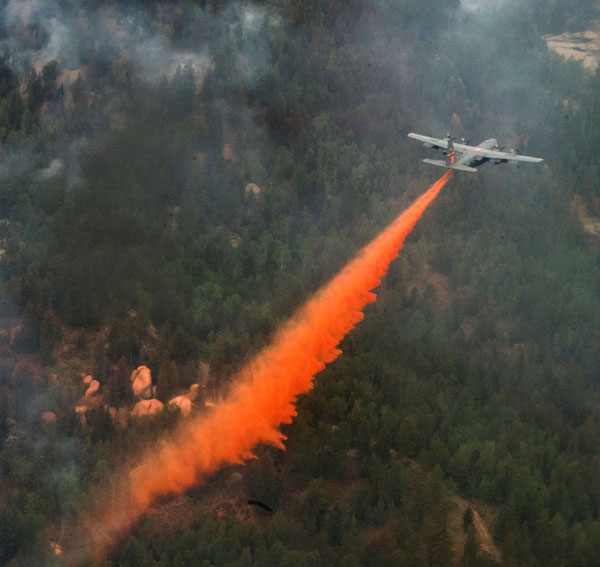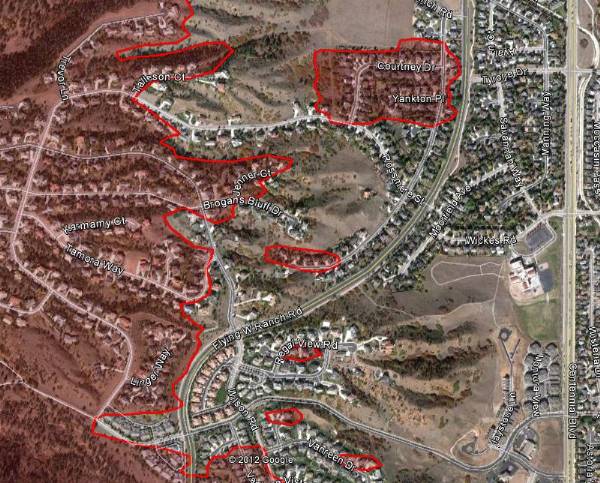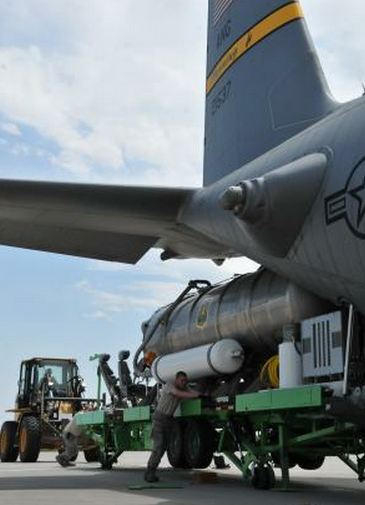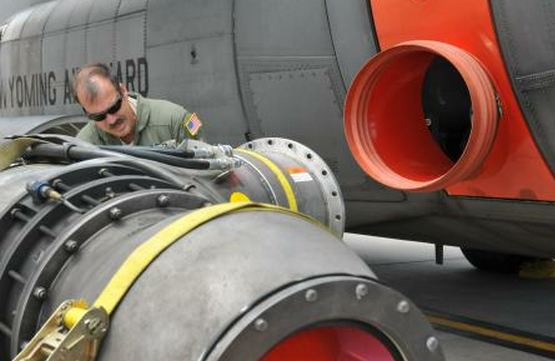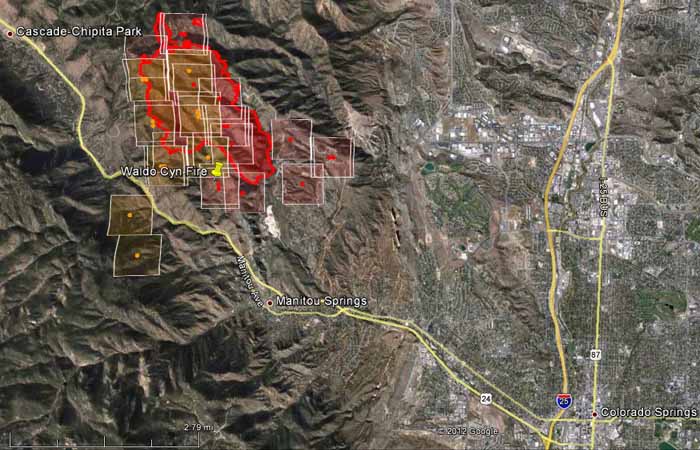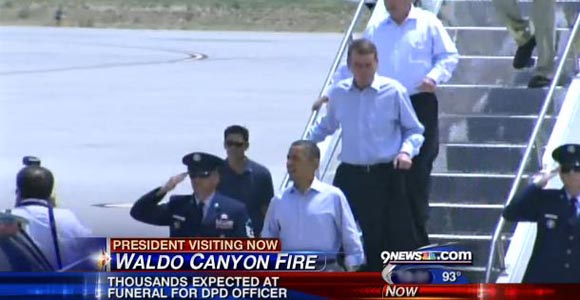
President Obama arrived at Colorado Springs at 12:13 p.m. MT Friday, 3 hours and 20 minutes later than the White House’s schedule, then he toured the Waldo Canyon fire area and received a briefing from incident personnel. The schedule called for him to be in Colorado Springs for 2 hours and 50 minutes.
The original plans were for Air Force One to park at Peterson Air Force base on the northeast side of the Colorado Springs Airport, but instead it went to the opposite side, perhaps to avoid interfering with operations of the four military MAFFS air tankers at Peterson. The President, accompanied by Colorado Governor John Hickenlooper and several other politicians departed the airport in an SUV, rather than a helicopter.
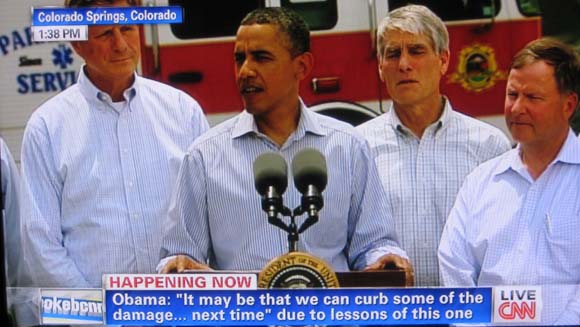
After he looked at some of the burned areas he received a briefing about the status of the fire. Then he made a short statement, speaking contemporaneously, without notes or a teleprompter. Here are some excerpts that I transcribed from the television coverage on CNN:
…Some lessons are being learned about how we can mitigate some of these fires in the future and I know that the Mayor and the Governor and other local officials are already in those conversations. It means that hopefully out of this tragedy some long-term planning occurs and it may be that we can curb some of the damage that happens the next time even though it is obvious that we can’t fully control fires that are starting up in these mountains.
[…]
The last point I want to make, is that we can provide all the resources. We can make sure they are well coordinated. But as I just told these firefighters what we can’t do is to provide them with the courage and the determination and the professionalism, the heart that they show when they are out there battling these fires.
When we had a chance on site to see some guys who had just saved three homes in a community that had been devastated, for those families, the work and the sacrifices of those firefighters means the world to them and they are genuine heroes. So we just want to say thank you to all the folks that have been involved in this, we’re proud of you, we appreciate what you do each and every day, and for folks all around the country I hope you are reminded how important our fire departments are, our Forest Service is. Sometimes they don’t get the credit that they deserve until your house is burning down or your community is being threatened. You have to understand that they are putting their lives at risk to save us and to help us. We’ve got to make sure we remember that 365 days a year, not just when tragedies like this strike.
Below is a video clip from Friday morning’s Today Show. It provides an update on the fire including a few seconds from the cockpit of a MAFFS C-130 air tanker..
Visit msnbc.com for breaking news, world news, and news about the economy



